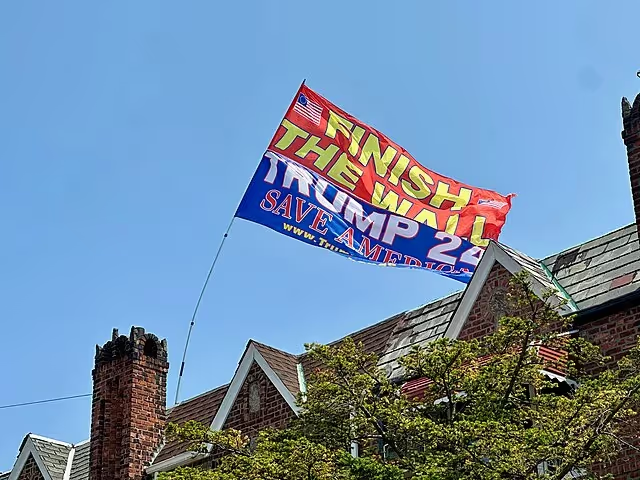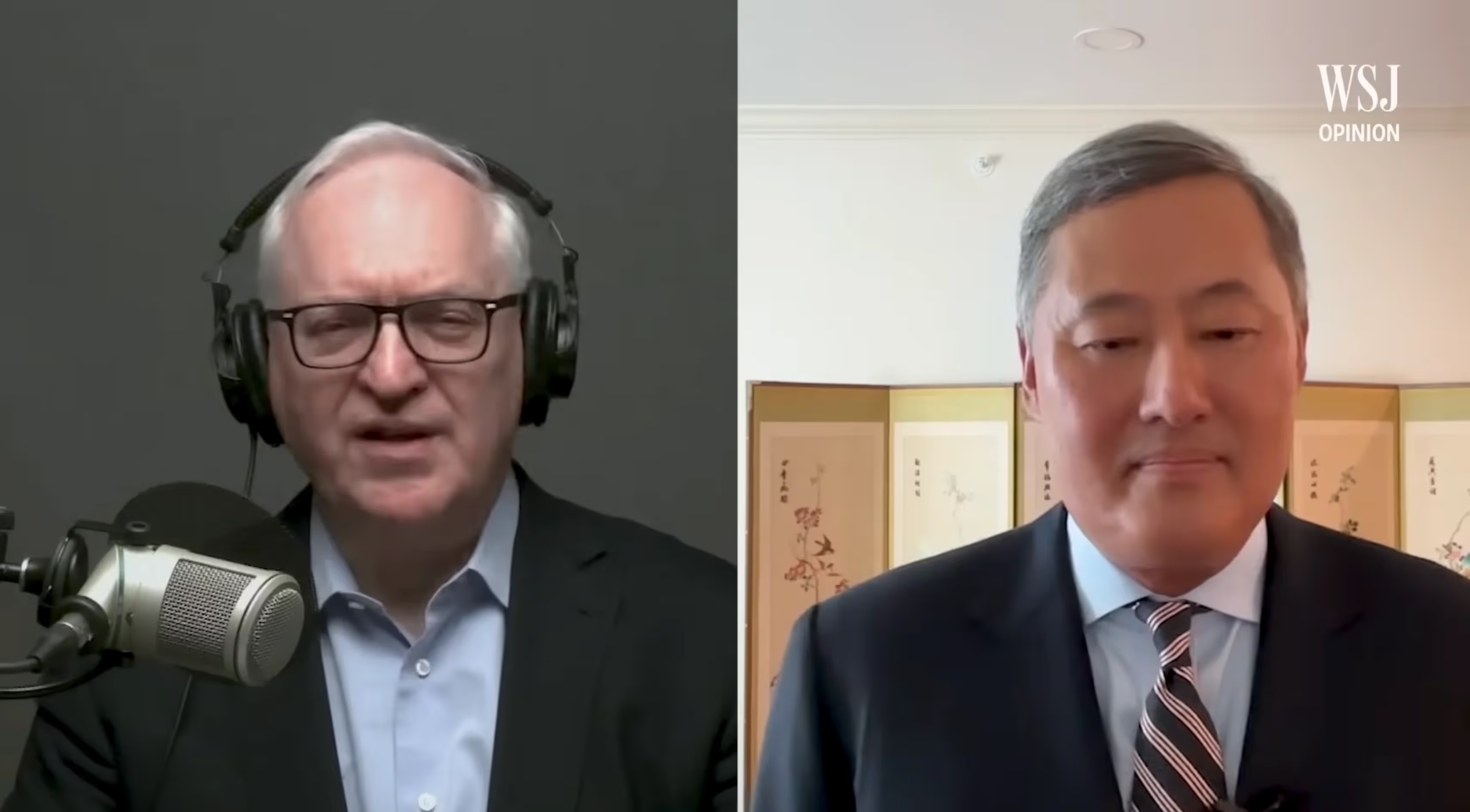
Night, Fury, and the Intellectual MAGA New Right
Field’s Furious Minds is a serious, nuanced starting point for studying the New Right — strong on relationships, imperfect on ideas, but essential for future work.
Many conservatives today are asking themselves how they got here. What happened to a conservatism rooted in freedom under God and defense of the Constitution? Why does it seem now to be run by people whom conservatives have historically opposed — the thin-skinned academic, the red-faced demagogue, the mincing antisemite, and most of all a cadre of grasping courtiers angling for greater access to power? Laura Field wants to answer these questions in her book Furious Minds: The Making of the New MAGA Right.
Hers is no easy task. The subject matter requires understanding who populates which New Right faction and what each faction aims to achieve. Her thesis is that several distinct factions act sometimes as partners and sometimes as rivals for control over efforts to replace the traditional Reaganite conservatism of free markets, traditional religion, and defense of liberty abroad. These factions include Claremonters, or those affiliated with the Claremont Institute and its brand of West Coast Straussianism (As an aside, I have always heard them called “Claremonsters,” but it’s her book. She can call them what she wants.) Another faction is the Postliberals, or those affiliated with Catholic integralism and its adjacent ideologies. She also describes the National Conservatives, or those affiliated with the Edmund Burke Foundation. Finally, she refers to the “Hard Right Underbelly,” which consists mostly of second and third-tier figures who retain some influence by taking extreme positions.
To generalize her typology, each faction has its own distinct agenda that only somewhat aligns with the rest. Claremonters are dedicated to protecting the president's legal prerogatives to maximize his executive authority and use it against his progressive opposition. Postliberals hope to establish a confessional Christian state with limited economic freedom and a distinctly isolationist foreign policy. National Conservatives want a right-wing, big-government approach to create client industries through strategic public-private partnerships that would financially support New Right-aligned politicians. The Hard Right Underbelly is less a coherent group. It is an assortment of misfits who generally seem to oppose things like interracial marriage, non-white immigration, and whatever else George Wallace or Jean Raspail used to mumble in his sleep. The Hard Right Underbelly operates as mercenaries, taking positions that the New Right leaders cannot quite mainstream yet.
The structure of Furious Minds is partially chronological and partially topical. The choice results from the emergence of different factions with distinct issues at various times. Initially, the factions did not even exist. For example, the book opens with an investigation of the Claremont Institute because it preexists the timeframe she establishes from the outset — the nomination of Donald J. Trump as the 2016 Republican Candidate for President. The book then addresses the first proponents of Trump at the Journal for American Greatness, who would later become leaders of different factions, such as Michael Anton among the Claremonters and Gladden Pappin among the Postliberals. She then discusses the origins of Postliberalism and National Conservatism, and how the old “Alt-Right” moved from the fringes to become acceptable partners, primarily through their affiliation with the Claremont Institute or the Edmund Burke Foundation.
Halfway through the book, she shifts from describing factions to major issues among the New Right. These include chapters on “Stop the Steal” legal theory of Claremonter John Eastman, the 1776 Project as opposition to the 1619 Project, the Postliberal plan to “integrate from within” the federal bureaucracy, and the Postliberal legal theory of “common good constitutionalism.” She concludes with the most pressing issues facing the New Right today, namely the social problems affecting men and a desire for Christian revival among a racist group of Protestants called “Christian Nationalists.”
As the reader can imagine, her efforts require a lot of names, dates, and places. The number of New Right figures grows so long that Field provides a Dramatis Personae reference guide at the front of the book to help the reader identify different key figures in case they become confused. The book is also lengthy, at nearly four hundred pages, and features extensive notation that can take the reader down a dozen different tangents that might interest them. Critics can disagree with her book, but she shows her work.
Field is not new to this subject. On the contrary, as a Senior Fellow at the Niskanen Center, she has been writing for several years about the New Right for The Bulwark and other “Never Trump” and center-left publications. The book opens with an introduction to her biography. A native Albertan, she was trained by “Straussians,” or scholars who derive their theoretical methods and research agenda from the oeuvre of Leo Strauss, a twentieth century German-Jewish émigré political philosopher whose influence was as much in his many students as his many books and articles. For Straussians, all that matters is that she received her PhD in political science from the University of Texas. Such a disclosure immediately denotes that she was part of the intellectual milieu of Tom and Lorraine Pangle, both decidedly orthodox “East Coast” Straussian thinkers.
The timing of her graduate training coincided with the difficult years at the end of the second George W. Bush presidency, the 2008 Great Recession, and the two terms of the Barack Obama presidency. I mention this to say that she received her training in the last years of Straussian dominance of conservative academic formation in political philosophy, a dominance now in steep decline as the most famous Straussian teachers have begun to retire or pass away. In this respect, Field and I are contemporaries and students of Straussian teachers (mine was James W. Ceaser). Both of us prepared for our academic careers with a set of methods and principles that the New Right rejects. They want nothing to do with what Strauss called “low but solid” liberalism. Rather, the New Right embraces an early influence on Strauss that he came to reject, the Crown Jurist of the Nazi Party, Carl Schmitt.
Field and I seem similarly motivated to understand what exactly has happened to the world we were supposed to be prepared to teach. When she was at American University and attending largely elite affairs at places like the University of Virginia, I was teaching at Ave Maria University, a relatively new Catholic liberal arts college in exurban south Florida, and therefore at quite a distance from the goings-on in elite conservative academia. Moreover, Field, being a moderate East Coast Straussian in her training, has as her natural opponent the West Coast Straussians of the Claremont Institute. Hence, she spends most of her time dealing with them to the expense of those I wanted to see more of — the Postliberals — since several of my now former colleagues are Catholic integralists. However, it is the lowest form of book review to complain that she did not write the manuscript I would have written. Rather, my point is that we are part of a micro-generation of scholars who experienced this transition at its inception and remain troubled that, despite learning a great deal about the New Right, we still cannot fully understand its appeal.
This much is evident in the way she presents her cases. She carefully mentions their faction affiliations and how they collaborate and disagree over issues she never imagined conservative academics would articulate, such as legal theories intended to undermine the plain meaning of the Constitution in the case of Eastman’s “Stop the Steal” efforts. Such a scheme was supposed to be the work of progressive jurisprudence. Yet, the chief theorist of common good constitutionalism, Adrian Vermeule, goes further to insist that courts should abandon originalism in favor of a dubious rendition of “classical legal theory” that is simply an ideological cover for right-wing results-oriented jurisprudence. The hidden comment beneath these cases is always, “Can you believe this?”
Being an East Coast Straussian, especially a Canadian one, means having a considerably more reserved opinion of the American Founding. West Coast Straussians could not disagree more, seeing the United States as something close to the best regime, or at least the best regime that will ever exist. Hence, for East Coast Straussians, losses and gains among political parties have less salience. Instead, East Coast Straussians are more interested in classical political thought and protecting the philosophical life. For West Coast Straussians, anything they see as an attack on the American regime is an emergency, and it is no surprise that a West Coaster of Claremont extraction, Michael Anton, wrote “The Flight 93 Election” essay, which has become one of the core texts of the New Right. The state of emergency is what grounds the radical political positions the New Right takes, and they couch it in slogans like “Do you know what time it is?”
In times of emergency, constitutions do not matter; rather, it is the leader. The leader is he who delivers the righteous people from the emergency. Postliberals, such as Vermeule, would point to Schmitt and his concept of Führerprinzip, or Deneen and his vision of “Aristopopulism.” The Claremonters take a different tack. They have spent decades venerating the figures of Abraham Lincoln (as understood by the late Harry Jaffa, who founded the Institute) and Winston Churchill (as understood by Larry Arnn, the president of Hillsdale College and the most prominent Claremonter in higher education). For them, politics reaches its greatest heights during crises, as when Lincoln and Churchill became the essential statesmen to meet the moment. The East Coast Straussian might note that such conflicts are harmful for philosophy, with Socrates as her chief witness, but who other than a traitor advises moderation in the face of an existential crisis?
Not only could Claremonters offer little theoretical opposition to the New Right, but their governing philosophy also welcomes the arrival of such a leader. With Anton’s Flight 93 intervention, Trump became the essential man for Claremonters. He was going to become the next great statesman for them, even if he lacked the melancholic fortitude of Honest Abe or the inebriated self-possession of the British Bulldog. Field repeatedly illustrates how these figures loom large as inspirations for Trump fighting a “cold civil war” against the existential threats of Hillary Clinton and Joe Biden. Yet, ironically, the Claremonters are advocates of positions that ultimately make their avatar less popular and even scandalous, not only in the Stop the Steal efforts but also in the overworked, rushed 1776 Project. These chapters feature her finest, sharpest work.
When the Claremonters recede and either the Postliberals or National Conservatives come to the fore, Field struggles. The Postliberals are somewhat less well-known and often work in languages other than English. They also work in a distinctly reactionary Catholic perspective that Field too often conflates with a broader MAGA view. Where Postliberals disagree with MAGA, such as the more dovish Postliberal immigration position (Vermeule favors open immigration for Catholics), their disagreements seem more “left” to her and hence earn less criticism. Sohrab Ahmari even receives some degree of praise despite retaining a strong affiliation with Orbán. The problem with her treatment of Postliberals is that they are not fundamentally aligned with MAGA, but with Vice President JD Vance, and their position in the MAGA Coalition is to replace MAGA, not join it.
Her problems with National Conservatism are more understandable. Yoram Hazony was an early leader of the New Right, and his National Conservatism conferences were the most significant events from 2019 to 2023. However, the organization struggled to remain relevant as Hazony invited in figures who would then outshine him and take “NatCon” institutions over from him, almost literally in the case of Kevin Roberts, the embattled president of the Heritage Foundation, which bailed out the 2022 NatCon conference at the last minute with interns and staffers stuffing goodie bags the night before the event registration began, to say nothing of its large donation that partially funded the conference. NatCon is now more of a clearing house over which Hazony, an Orthodox Jew, has only ceremonial control, one openly scorned as the New Right becomes more overtly antisemitic. He all but confirmed his marginalization when he admitted at this year’s National Conservatism Conference, the one that he founded, that “Nobody ever said that to be a good natcon you have to love Jews.” The ideological coherence of National Conservatism was never robust, and there is nothing left of it now. Reading Field’s book helps the reader understand why, even if that was not her original purpose in writing what she does.
As for issues with the book, the first one I noticed is that she makes very little use of evidence that much of MAGA is funded by leftwing foundations, especially the Hewlett Foundation and Omidyar Foundation. Hewlett has been especially generous, giving seven-figure grants to the American Affairs Foundation and American Compass, and nearly $1 million to the Intercollegiate Studies Institute. While this charge is impossible for a conservative over a certain age to believe, the disclosures are public information, and the reasons are apparent. The Hewlett Foundation opposes “neoliberalism,” and so do many of the New Right institutions. Plus, conservative organizations outside of the American Enterprise Institute are regularly short on cash, making them easy targets for well-heeled leftwing foundations looking to create a conservative movement in their own image.
The same goes for Viktor Orbán and his efforts to make in-roads at places like the Heritage Foundation to draw it away from its mission to defend American leadership of the free world and toward a new mission of protecting Russian interests, such as in the defunding of Ukraine. Field does mention Orbán, but not in this capacity. Again, the book is already long, but examining the financial foundations of the New Right is too important to ignore.
Another critical issue with the book is the treatment of Trump himself. It is unclear, at least from the outside, how much these factions influence Trump. She shows how the “Stop the Steal” and the 1776 Project were Claremont ventures that reached Trump’s ears, but is that really all there is to it? Darren Beattie comes and goes from the administration, but how much influence does he have on policy? In a way, I almost do not want to stress this shortcoming because Trump is once again in office, so these questions remain hard to answer, as current staff will not want to answer such questions. Perhaps future historians might draw on Furious Minds for research questions to fill in these gaps. However, Field is the one who pins this on Trump as part of the MAGA coalition. The book could have benefited from on-the-record interviews with former Trump staffers, or even the now-marginalized former Vice President Mike Pence, to provide a clearer understanding of how the different factions influenced Trump’s decision-making.
I also raise the issue of interviews, as a few mistakes in the book are beginning to add up. For example, she mentions Glenn Moots as a mentor to Stephen Wolfe, the author of The Case for Christian Nationalism and the leader of the Christian Nationalist contingent, which is akin to a Protestant Postliberalism. Wolfe calls Moots a mentor in the introduction to his book, but Moots was a mentor in the sense that he helped Wolfe with resourcement of early Reformation political theology that composed Wolfe’s dissertation. Moots most definitely did not mentor him to add the “based” references to “GAE” (Globalist American Empire). In fact, he has criticized that turn in Wolfe’s work. Field calls Richard Reinsch a “libertarian,” when he is more fittingly called a Catholic classical liberal or “fusionist.” As an outsider, Field could have benefited from also interviewing these and other figures, since they are readily accessible and likely had much to say that would have enriched her book.
To summarize, the best way to describe Furious Minds is that it is “a good start.” Field gets the complicated relationships among major figures and institutions right, even if she misunderstands some of the ideologies and the roles of some of those fighting over the future of American conservatism. All future research in the subject area should refer to it as the starting point for the still-evolving New Right. Field has also written the book so as to make a smooth transition from a work on current events to a work of intellectual and political history. She does not take the easy way out and chalk up the New Right to a gaggle of populist know-nothings or brainless devotees in red hats. She takes the New Right seriously and appreciates the real talents of those involved. It is a shame that analysis like this is so rare, and she should be rewarded for taking it on.
James M. Patterson is associate professor of Public Affairs in the Institute of American Civics at the University of Tennessee’s Baker School of Public Policy and Public Affairs.
Politics
.webp)
Liberal Democracy Reexamined: Leo Strauss on Alexis de Tocqueville
This article explores Leo Strauss’s thoughts on Alexis de Tocqueville in his 1954 “Natural Right” course transcript.
%20(1).avif)
Long Distance Migration as a Two-Step Sorting Process: The Resettlement of Californians in Texas
Here we press the question of whether the well-documented stream of migrants relocating from California to Texas has been sufficient to alter the political complexion of the destination state.
%20(3).avif)
Who's That Knocking? A Study of the Strategic Choices Facing Large-Scale Grassroots Canvassing Efforts
Although there is a consensus that personalized forms of campaign outreach are more likely to be effective at either mobilizing or even persuading voters, there remains uncertainty about how campaigns should implement get-out-the-vote (GOTV) programs, especially at a truly expansive scale.

Decadent Ideology, Decaying Fraternity
Richard Reinsch reviews Prosperity and Torment in France by Chantal Delsol.

DC and LA Failures Play Into Trump’s Hands
Although clearly violating America’s long-standing federalist principles, Trump’s incursions are being justified by the incompetence of most blue-city leaders.

The Real Character of American Populism: A Response to Richard Epstein
The ultimate contrast is in the character of the populists themselves.

Is This Nixon Redux?
While the parallels between the Nixon and Trump presidencies might seem striking, there are critical differences that should not be ignored.




.avif)









